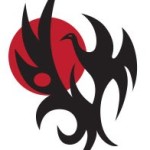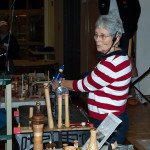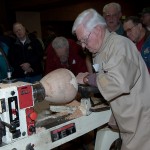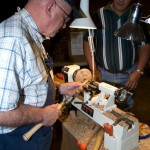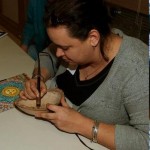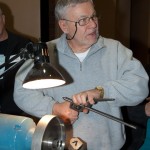The Northwest Woodturners in Beaverton, Oregon are meeting on November 7th. The topic for this month’s meeting is a surprise. No, really, the newsletter lists the topic as a surprise!
The Inland Northwest Woodturners in Spokane Valley are meeting on November 7th. The program for the evening has not yet been announced.
The Southwest Idaho Woodturners are meeting on November 12th. The meeting will include election of officers.
The Seattle Woodturners will be meeting next on November 14th. This month’s meeting will feature Dr. Sara Robinson speaking on “Spalted Wood Explained”.
The Fraser Valley Woodturners Guild in Abbotsford, B.C. are meeting on November 14th. Colin Delory will be presenting segmented woodturning.
The Willamette Valley Woodturners in Salem, Oregon will be meeting on November 14th. Jim Devorss will be presenting Christmas decorations.
The Woodturners of Olympia are meeting on November 14th and will be hosting a demonstration of long-stemmed goblets by Alan Carter. Alan will also have an all-day demo on the 15th.
The Olympic Peninsula Woodturners will be meeting on November 20th. Alan Carter will also be the demonstrator at the OPCAAW meeting.
The Northwest Washington Woodturners are meeting on November 21st for their annual Holiday Party. The NWWWT do not meet in December.
The Cascade Woodturners are meeting on November 21st. Ben Carpenter will be discussing turning green wood.
The Island Woodturners Guild on Vancouver Island will be meeting next on November 23rd. Alan Carter will also be visiting the Island Woodturners for this meeting.
The Greater Vancouver Woodturners Guild in Vancouver, B.C. are meeting next on November 27th. The program for the evening has not yet been announced.


